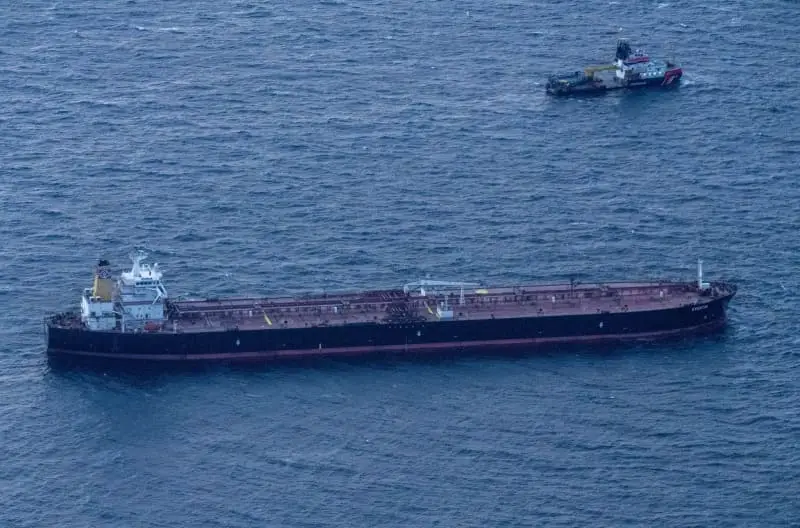Think of those great train experiences, the classic iron-road odysseys that fill your heart with joy. Forget, for a moment, that these days the Orient Express doesn’t actually go to the orient and that the Flying Scotsman might involve a bus replacement service. Modern rail travel can still have magic. When I hear that a new high-speed line is being built to connect Warsaw with Vilnius, Riga and Tallinn, I know what I want to do. I want to go from London to the Baltic states by rail before it gets all sleek and swanky (the line is due to open in 2028). I want the whiff of Soviet times, a bit of what the Germans call Ostalgie. And having recently done London to Marrakech on the train, I know that there is no rush, and that there is extra joy to be had in well-chosen stopovers. I grab a map.
In the past couple of years, Europe has been experiencing a boom in new rail services, partly driven by environmental regulation, but also consumer demand for flight-free options. France, for example, has banned short domestic flights where a train journey of under two and half hours is available. New night sleepers connect Amsterdam with Austria, and Paris to Berlin. Stockholm is directly linked to Hamburg and Berlin, making London accessible inside 24 hours.
Poring over the map, I start to get excited. My objective is clear: the Suwałki Gap, the narrow corridor of borderland where Poland meets Lithuania, the sole terrestrial connection between the democracies of the Baltic States and western Europe. Flanking this 70-mile-wide defile are on one side Belarus, and on the other Russian Kaliningrad, a heavily militarised enclave. This gun-lined ginnel has long been strategically vital: part of Napoleon’s Grande Armée marched through it in June 1812, then scuttled in the opposite direction six months later leaving half a million dead behind. Now war in Ukraine has focused attention on it again.
There is, I discover, a railway line snaking out from Warsaw to skirt the Belarus border and then stop at the Lithuanian border village of Mockava. There passengers must cross the platform and take an old Soviet-gauge service into Vilnius. It sounds irresistible.
I start at London St Pancras, a contemporary station neatly spliced into George Gilbert Scott’s 1876 Gothic revival masterpiece, now the Renaissance hotel. Departing by Eurostar at 8.15am, I’m in Brussels Midi before lunch. This station does not get my pulses racing, but I’ve got an hour to kill so I wander outside and discover the Midi market, which does. This is the place to buy supplies: samosas, olives and huge punnets of fruit for a few euros.
Getting on the Cologne train with me are several security guards which is reassuring: last time I caught this service my bag was stolen and the German police comforted me with, “It happens all the time”. On this occasion I take better care, hopping off at Cologne for a quick visit to the cathedral, the world’s largest church facade begun in 1248 and finished a mere six centuries later. By late afternoon, I’m on the Berlin train, heading for a real modern tour de force: Hauptbahnhof, a multilevel geometric dazzle of trains, elevators and shops. After a night in a hotel close to the station, there’s time for a power walk to the Reichstag and Brandenburg Gate before I catch the train to Poland.
Having spent a full day travelling, I’m slowing down, determined to spend time exploring cities that are new to me. First up is Wrocław, which the train conductor tells me is pronounced “vrot-swaff”. The station alone is worth the halt, a 19th-century Silesian masterpiece that somehow blends Indo-Saracenic towers with wooden kiosks and vaulted ceilings. Once this was the German town of Breslau where William Stern devised the concept of IQ and Hitler gave a speech from the balcony of the Hotel Monopol. Much of the old medieval town centre survived the second world war and that’s where I stay. It’s this part that makes a visit worthwhile, strolling the cobbled streets past towering merchant dwellings, then down to the islands in the River Oder, all connected by footbridges with some great restaurants and cafes.
Next morning, I’m on the train to Warsaw, arriving as a massive electrical storm wreathes the towering Stalinist Palace of Culture and Science in veils of rain. By evening, however, it’s all cleared and I walk the Royal Route, stopping into the Holy Cross church to see where the heart of Frédéric Chopin is buried, then half a mile past the presidential palace to the statue of 16th-century King Sigismund III Vasa who made Warsaw the capital before marching off to capture Moscow (that Suwałki corridor playing its part again). The city feels vibrant and optimistic, full of interesting bars, cafes and restaurants. I eat in Alewino tucked down a little sidestreet and sleep at Hotel Polonia.
The next day at 7.45am, I’m ready for the last leg, seat booked. We head east, passing engineers busily constructing the new Rail Baltica line before hitting deep forest. I glimpse deer as we cross the Biebrzański national park. Belarus is hidden behind the pines. And then we slide into a bucolic bliss. There are storks nesting outside quaint old farmhouses with crooked barns. Dusty lanes wind off through wood meadows full of flowers. We pull up in Mockava and everyone steps down from the train, blinking in the sunshine. We wait. A cuckoo calls. The Lithuanian train arrives, not a steam-belching Soviet-era monster, but a sleek contemporary edition that leaves on time.
A couple of hours later we arrive in Vilnius, one of Europe’s loveliest capitals with cool street cafes and gorgeous baroque churches. I walk out and find a city settling into peaceful prosperity. Even the notorious graffiti of Putin snogging Trump is gone. I’m now seriously worried. The Suwałki Gap is a rural idyll and Vilnius is a charming bourgeois cafe society. Where am I to get my plate of Soviet-era nostalgia-gloom?
Next day, I head for the former KGB headquarters. It’s in a quiet sidestreet, behind an elegant neo-classical facade. Inside is a sobering lesson in the horrors of totalitarianism and a reminder why the Baltic states have so determinedly turned their backs on it. The banality of the upper offices leads down to the cells, then the torture rooms and finally the execution chamber, discarded shoes still lying around. En route is a heartbreaking collection of cruelty and injustice told in artefacts, photographs and storyboards.
after newsletter promotion
Two hours later I stumble back outside and meet Lina, my guide for a cycle tour of the city. “My grandfather spent a year in the cells there,” she says.
“What was his ‘crime’?”
She shrugs. “He was a successful farmer. They sent him to Siberia in a cattle truck. Many did not survive the journey. When he was released in the late 1950s, he was not allowed to return home so my grandmother went out and they settled in Kazakhstan.”
We get on our bikes and set off, stopping at the magnificent 15th-century church of St Anne to admire the flamboyant gothic towers. Couples stroll past, cafe lattes in hand.
“What did your other grandfather do?”
She gives a rueful smile. “He worked for the KGB.”
I follow her down to the river and we cross into the Free Republic of Užupis. In the 1990s when communist dictatorship disappeared there was chaos, but there was also a paroxysm of creativity and self-expression. Vilnius’s artist rebels came here, slapping graffiti on walls, making music, taking drugs and living by the ethos that is written on the walls: no one has the right to violence. Their heroes were Zappa and Lennon, who both have statues. At the time no one seemed sure whether Užupis was a counterculture joke or a genuine claim to independence. The ambiguity remains.
Lina and I sit by the statue of Jesus as a backpacker and the rest of her family saga comes out. For me this is the fascination of the Baltics: the stories behind the facade, the epic dramas of ordinary lives. And Lina’s story is only one of many that I will hear as I head north across Latvia and into Estonia. Next day, I head for the bus station – the railway line, unfortunately, is still being built.
Rail travel provided by Interrail. A four-day pass costs £245 (27 and under: £183, over 60s: £220). Further assistance provided by Marriot Hotels, Visit Berlin, Poland Travel, Go Vilnius
Part two of Kevin’s Baltic journey will appear in print and online on Saturday 13 July







